Soften butter quickly with this trick. If you forget to let your butter come to room temperature ahead of time, use this quick and easy method.
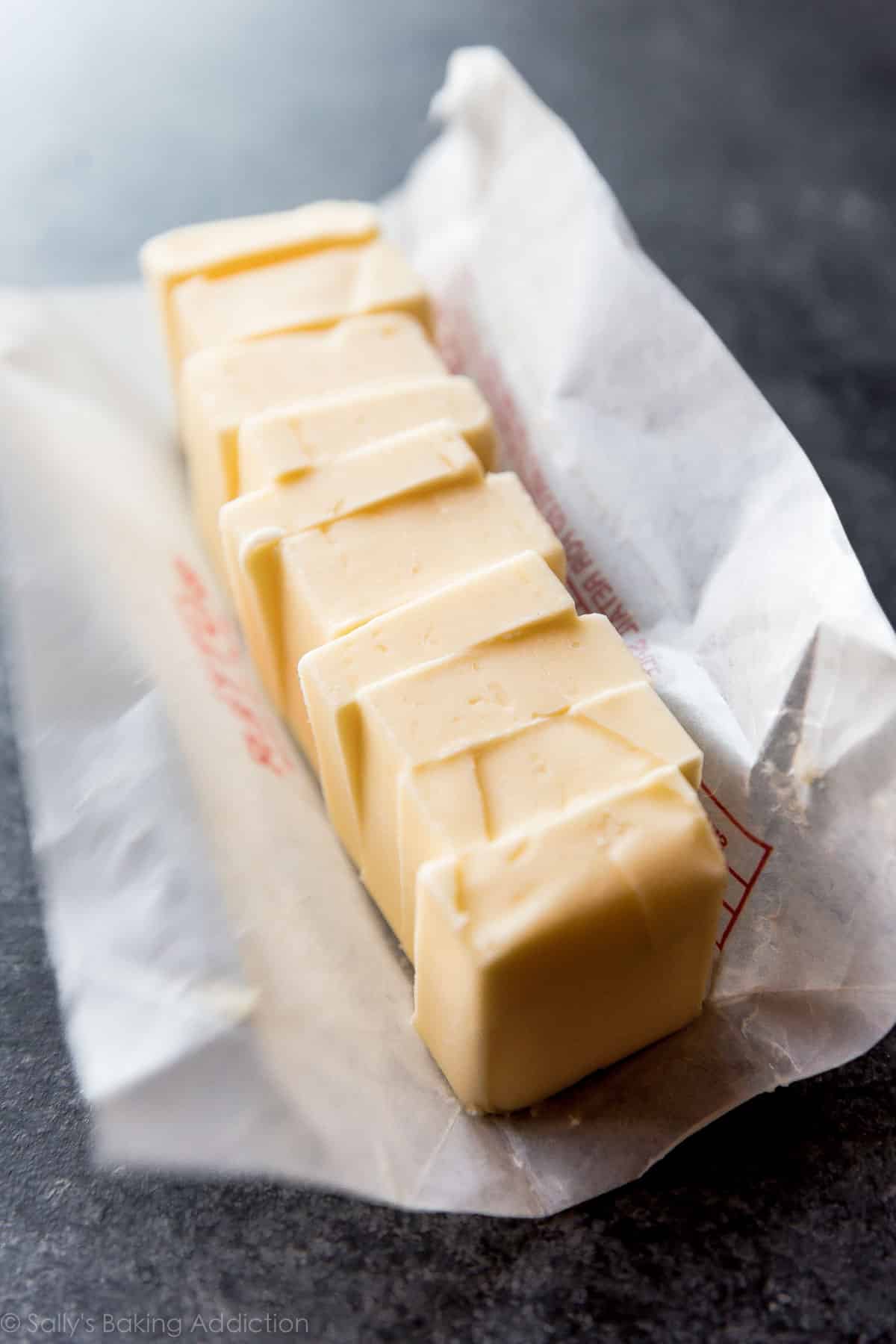
If you find yourself baking more these days, take the time to review this helpful post. I’m so excited to republish it because understanding this crucial concept is key in your baking’s success.
Butter is the starting point for an immense amount of baked goods, so it’s important to have it prepped as the recipe suggests. But guess what? We’re all human and we forget to bring butter to room temperature first or we just don’t have the time. We make up for it by trying to heat it in the microwave, but it always ends up slightly melted. At this point, butter and sugar can’t cream properly leading to cookies over-spreading, dense cakes, overflowing cupcakes, and flat muffins.
Let me help.
Soften Butter Quickly with This Trick
Let’s dive into this a little further.
Why Softened Butter?
First, let’s discuss why you actually need softened butter for your recipe. I actually have an in-depth post about room temperature butter if you’d like to read further.
Most recipes calling for butter call for room temperature/softened butter. And there’s legitimate science involved for this particular consistency. Butter, a solid fat, is capable of holding air and the creaming process is when butter traps that air. While baking, that trapped air expands from the heat and produces a fluffy baked good. Not only this, room temperature ingredients bond together very easily since they’re warmer, creating a seamless and evenly textured batter. A smooth batter with trapped air = a uniformly textured and proper tasting baked good. Cold ingredients do not emulsify together. Period. This results in clumpy frosting, chunky cheesecake, dense cake, flat breads, and oily muffins.
- It’s literally #1 in my 10 best baking tips: if a recipe calls for room temperature butter, use room temperature butter. It can’t properly cream with sugar otherwise.
- And here’s even more on how to cream butter and sugar, including helpful photos and a video tutorial.
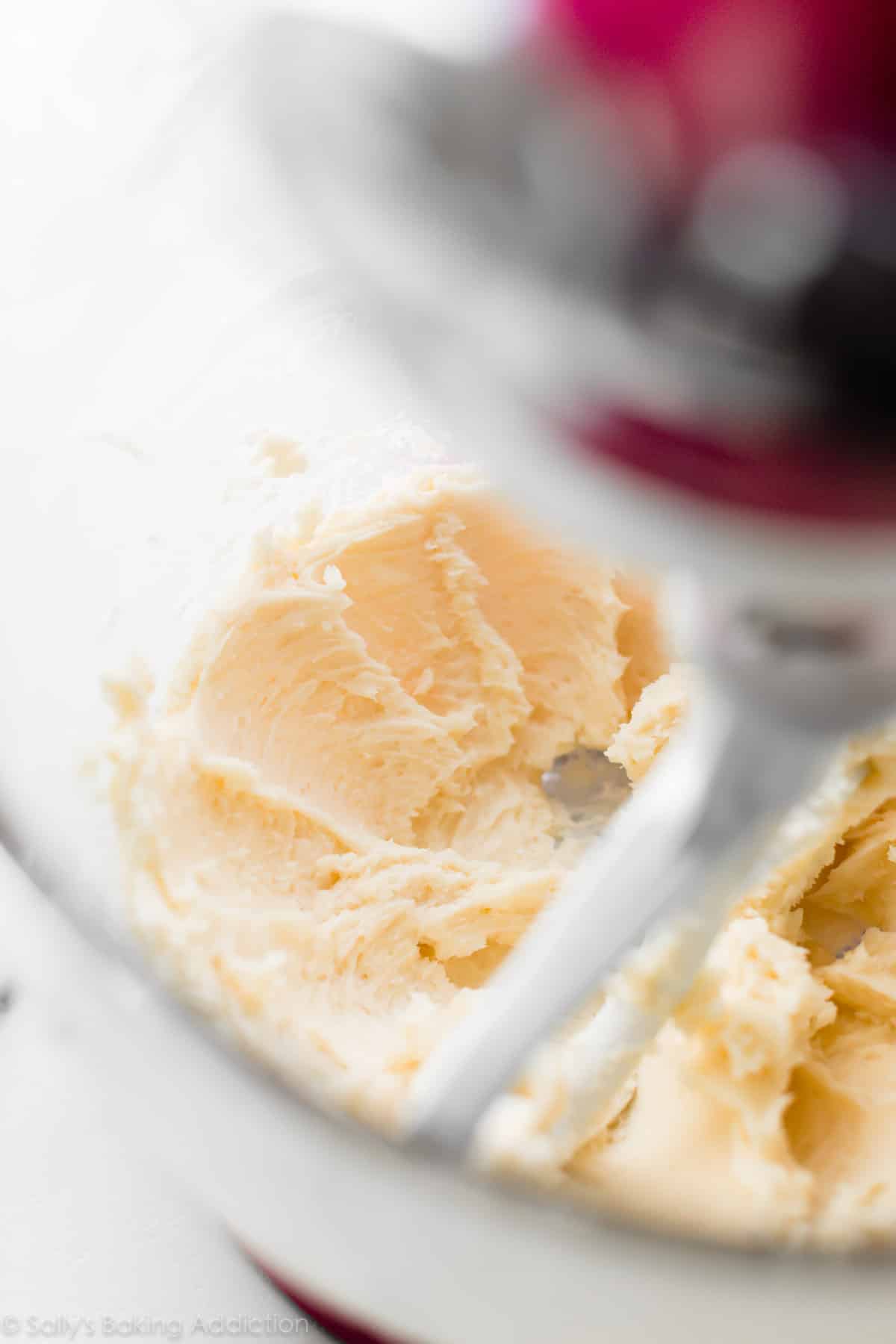
Room Temperature Butter Is Colder Than You Think
Room temperature butter is cool to the touch and about 65°F (18°C). This might be colder than your kitchen. When you press it, your finger will make an indent. Your finger won’t sink down into the butter, nor will your finger slide all around. To get that perfect consistency and temperature, leave butter out on the counter for around 1 hour prior to beginning your recipe.
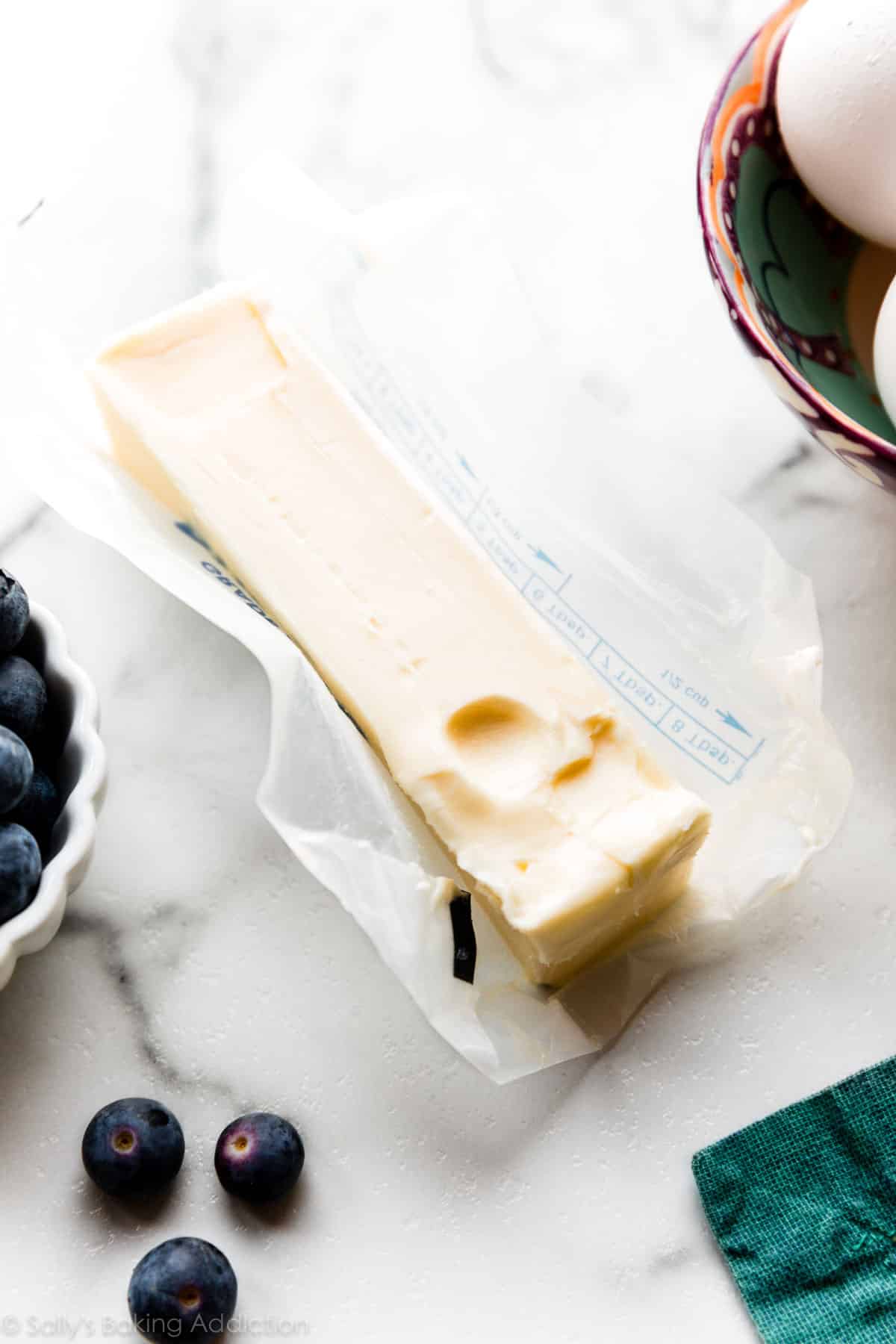
If your cakes are dense, you’re probably softening the butter too much. And butter that’s too warm causes cookies to overspread. But guess what? You have complete control to prevent these problems.
How to Soften Butter Quickly
The best way to soften butter for a recipe is to set it out on the counter for about 1-2 hours. The amount of time depends on the weather and how cool you keep your kitchen. But we forget and/or we just don’t have time.
There’s a billion tricks to softening butter quickly, but the following is what works best for me. Here’s what you need:
- Water
- Butter, sliced into small pieces
- Microwave
Step 1: Pour 2 cups of water into a microwave-safe cup or bowl. I always use a liquid measuring cup.
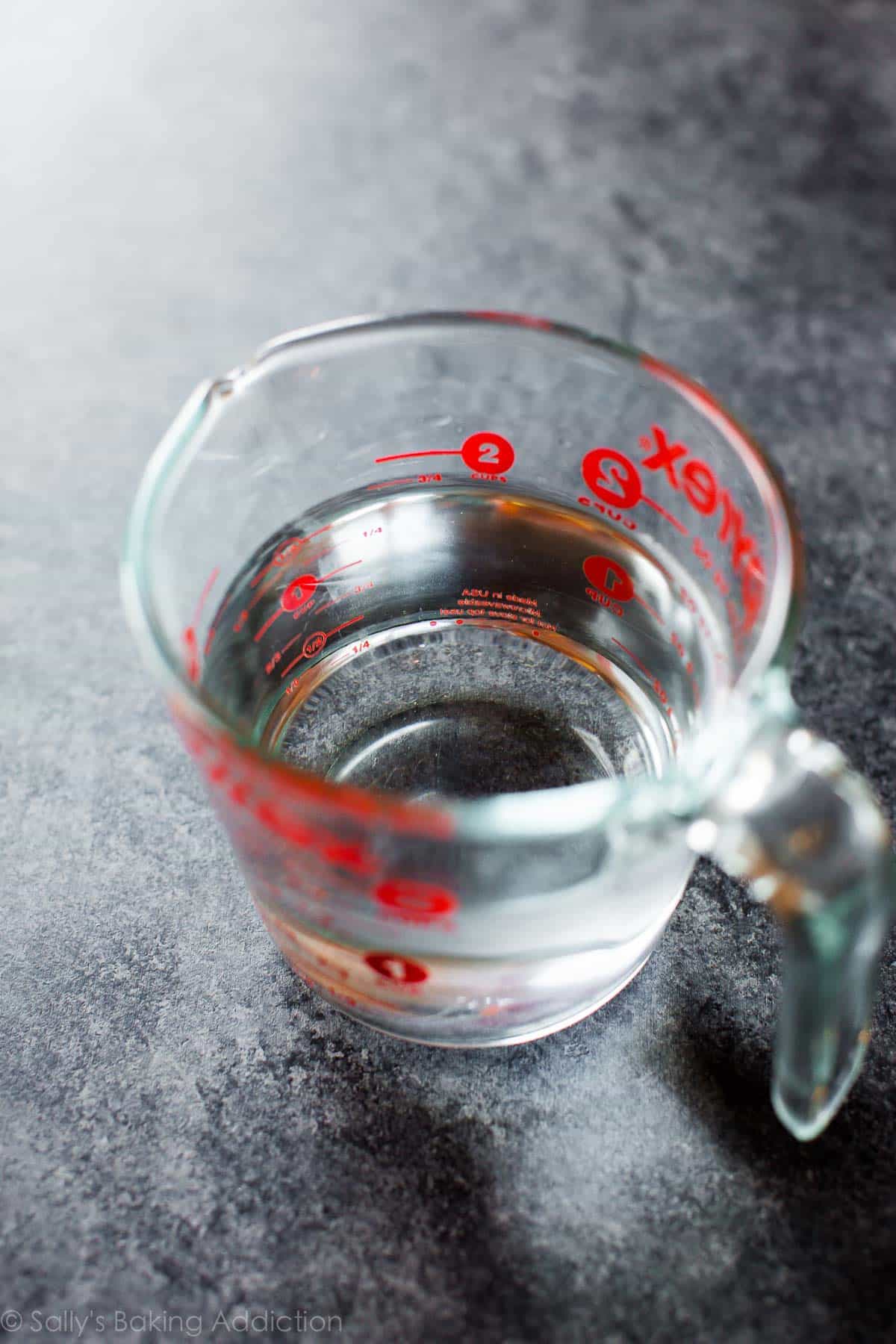
Step 2: Microwave it for 2 minutes until extremely hot. Meanwhile, place butter in a heatproof bowl or on a plate.
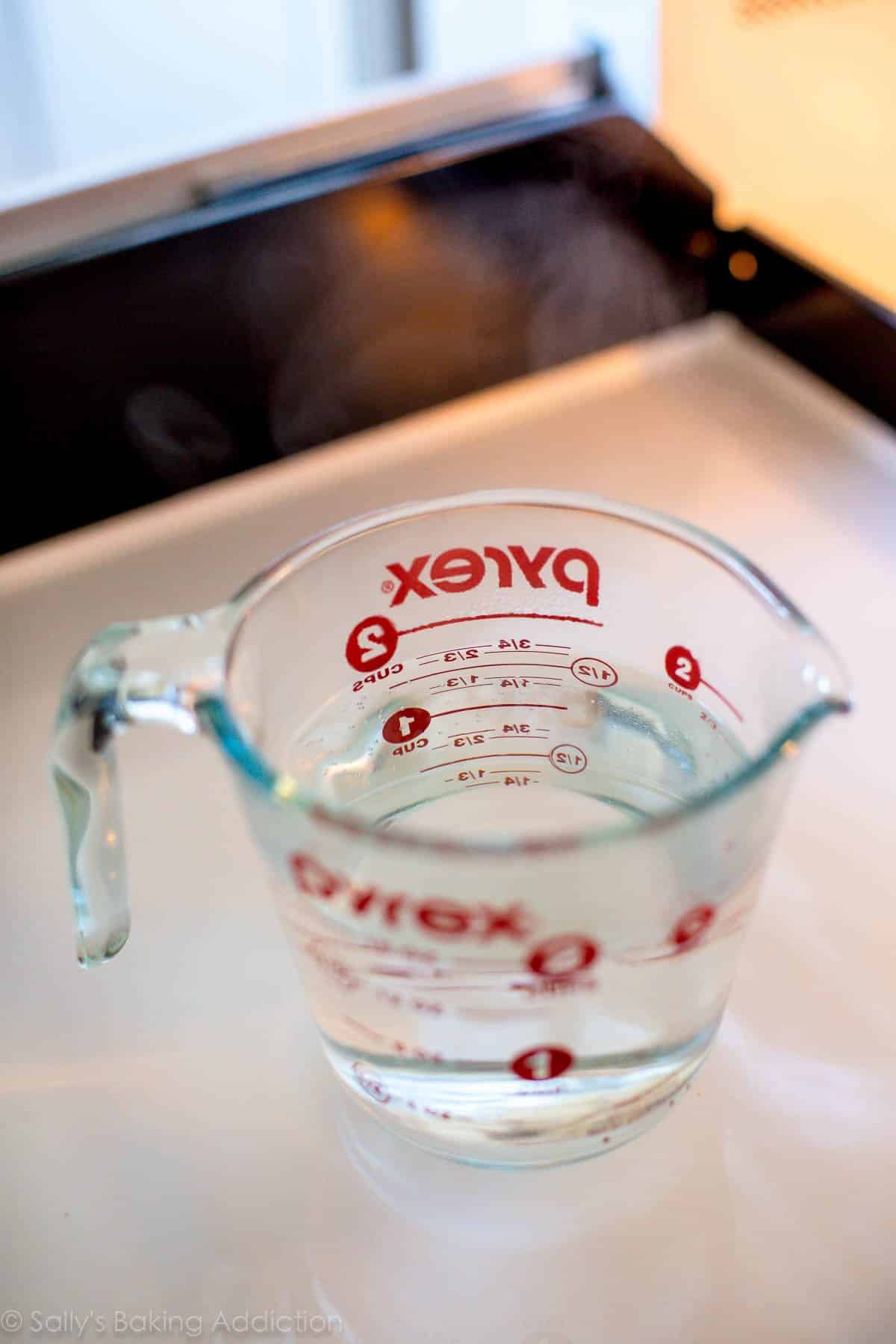
Step 3: Remove water from the microwave. Place butter inside. Quickly close microwave. (Our microwave is one of those models in the kitchen island. I love it!)
Step 4: The radiant heat will soften the butter in about 10 minutes.
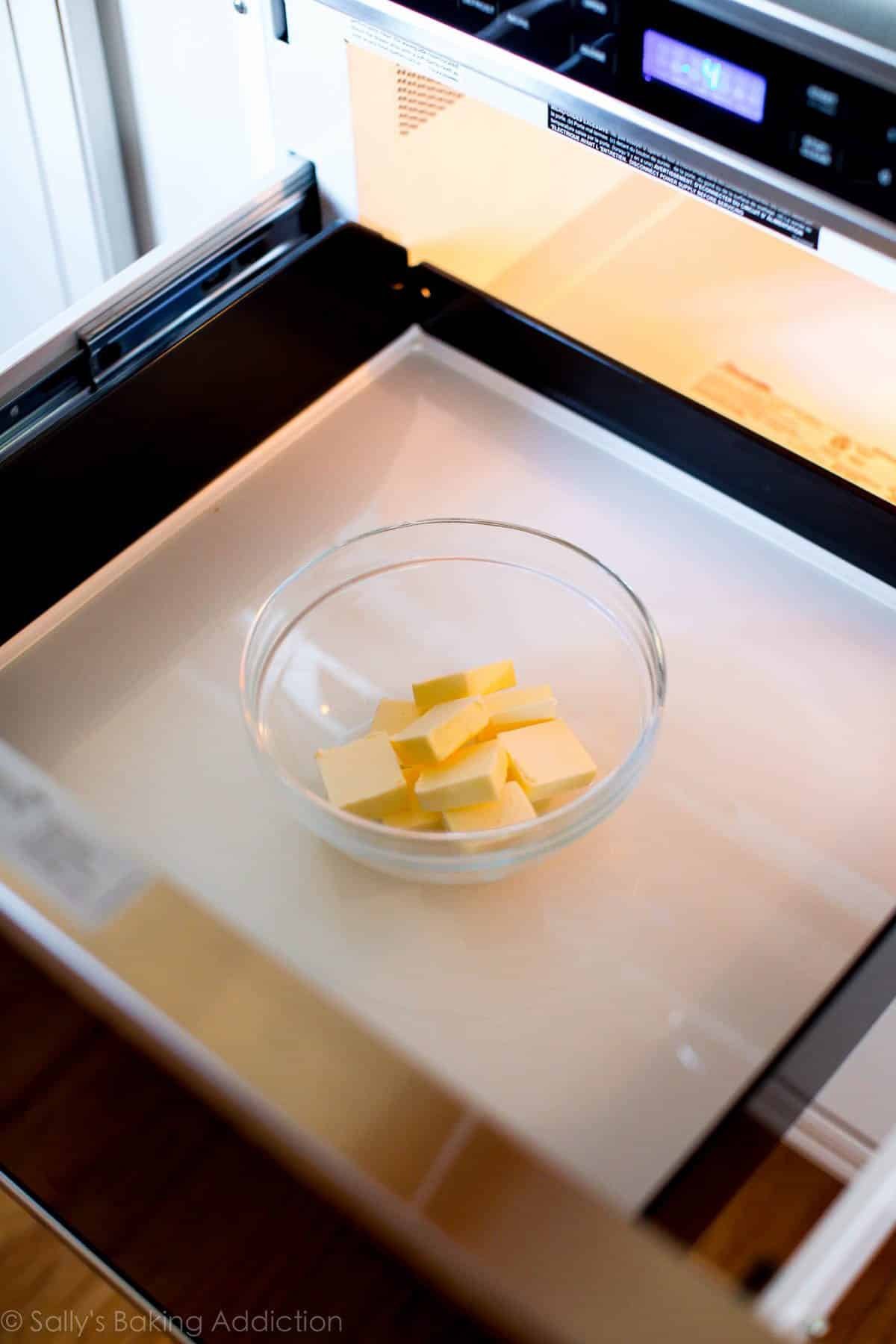
Keep This in Mind
The more butter your recipe calls for, the larger the bowl or plate (holding the butter) should be. In other words, you don’t want a huge pile of butter in a small bowl. Spread it out so the pieces of butter can warm up quickly and evenly.
More Tips to Make YOU a Better Baker
- Salted vs Unsalted Butter
- My 10 Best Baking Tips
- Why Room Temperature Ingredients Make a Difference
- 14 Best Baking Tools That Every Baker Needs
- Baking Powder vs Baking Soda
- Buttermilk in Baking 101 (including DIY buttermilk substitute)
- How to Cream Butter & Sugar
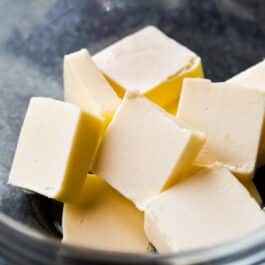
How to Soften Butter Quickly
- Prep Time: 2 minutes
- Cook Time: 2 minutes
- Total Time: 15 minutes
- Yield: 1/2 cup
- Category: Baking
- Method: Microwave
- Cuisine: American
Description
Soften butter quickly with this super easy trick.
Ingredients
- 2 cups water
- butter (sliced into pieces)*
Instructions
- Pour 2 cups of water into a microwave-safe cup or bowl. I always use a liquid measuring cup.
- Microwave it for 2 minutes until very hot. Meanwhile, place pieces of butter into a heatproof bowl or on a plate.
- Very carefully remove water from microwave. Place butter in the microwave. Immediately close the microwave door to trap hot air inside.
- The radiant heat will soften the butter in about 10 minutes.
Notes
- Special Tools (affiliate links): Liquid Measuring Cup
- The more butter your recipe calls for, the larger the bowl or plate (holding the butter) should be. Spread the pieces of butter out so they can warm up quickly and evenly. Thinner pieces will soften faster.
And Always Remember
If a recipe calls for room temperature butter, make sure all other ingredients are room temperature as well. This includes eggs, milk, and sour cream. When cold ingredients touch creamed butter, the butter will cool down and solidify again. And, as you now know, this sabotages your recipe. Place eggs in warm water for 10 minutes and/or microwave dairy ingredients (not butter!) for about 10 seconds prior to using. Now go make perfect sugar cookies!


















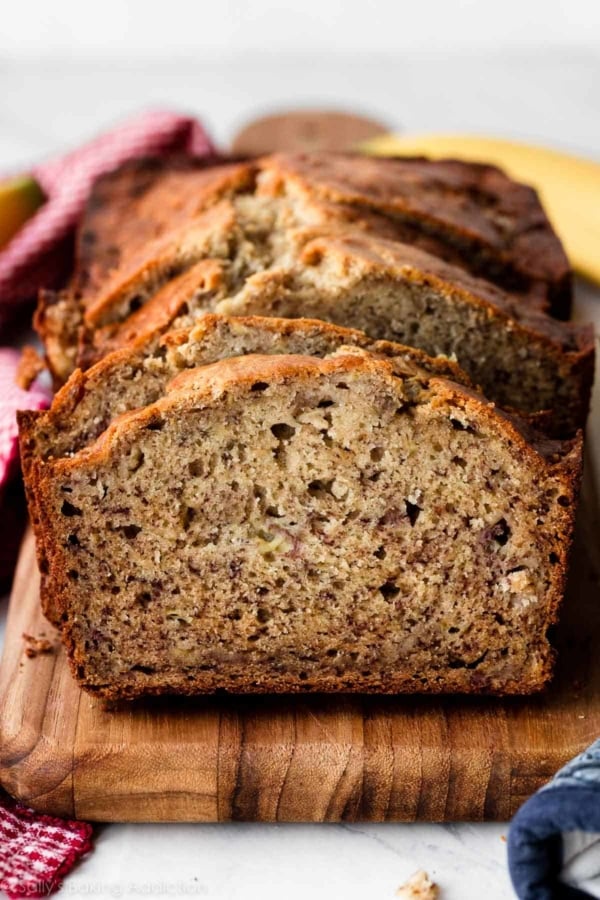

Reader Comments and Reviews
My banana cake always turns out too dense and it raises more than your pics. I did just read your tip about butter and I am guilty of microwaving mine but why so dense?
While I’m sure this method works, I do not own a microwave and prefer not to have or use one in my home. Do you know of another method that is more natural? I do appreciate all of the other information here, thank you.
Hi Julianna, we’re sure there other methods out there that don’t use a microwave, this is just what we have found to work the best! Let us know if you find another method you prefer.
Tip for softening butter I got from a friend was to put very hot water in a glass bowl and let the glass heat up. Place the empty hot bowl over the sliced butter for about 10 minutes. (I measure and prep all the other ingredients during this time). Hope this helps you.
Some recipes call for softened butter, some for room temperature butter. Are the the same or is there a difference between the two?
Hi Susan, in our recipes, we will say softened to room temperature, or indicate if it need to be softened further (for example, we use butter that’s a bit warmer that room temperature in recipes like sweet rolls, when we need to spread butter for the filling). Here’s more on what room temperature really means. Hope this helps!